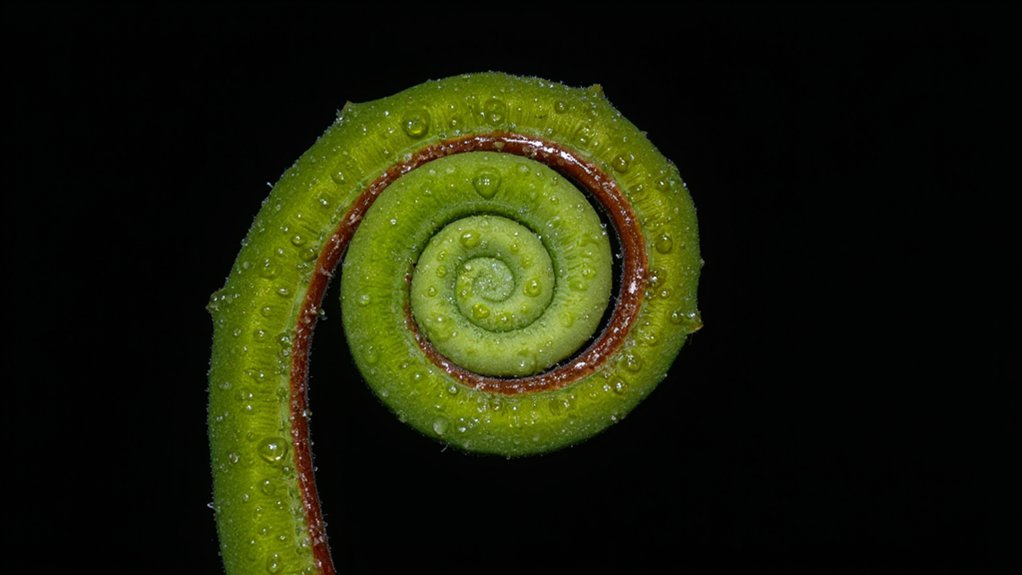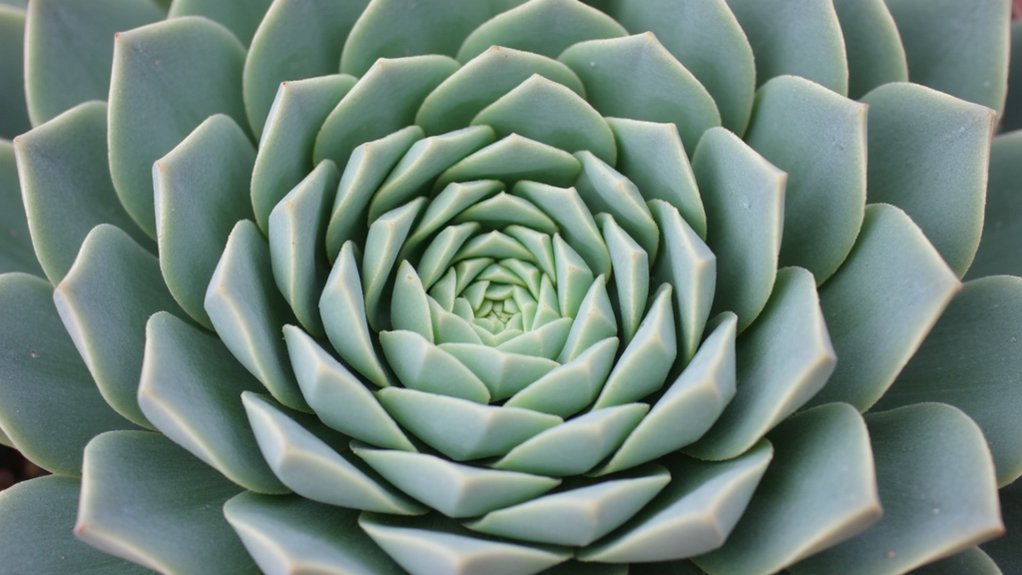You’ll find nature’s most fascinating mathematical pattern right in your backyard – the spiral growth of certain plants. When you look at a sunflower’s seed head or a pine cone’s scales, you’re seeing the Fibonacci sequence in action, creating perfect spirals at precisely 137.5 degrees. It’s not just about looking pretty – these spirals give plants a serious survival advantage that’s worth understanding more deeply.
Contents
- 1 The Mathematics Behind Nature’s Spirals
- 2 Understanding the Fibonacci Sequence
- 3 Plant Growth Patterns and Phyllotaxis
- 4 Evolutionary Advantages of Spiral Arrangements
- 5 Common Plants Exhibiting Fibonacci Spirals
- 6 The Role of Golden Ratio in Plant Architecture
- 7 Modern Applications of Nature’s Spiral Patterns
The Mathematics Behind Nature’s Spirals

When you observe spirals in nature, you’ll find they often follow a precise mathematical pattern known as the Fibonacci sequence. This sequence starts with 0 and 1, with each subsequent number being the sum of the previous two: 0, 1, 1, 2, 3, 5, 8, 13, and so on.
You’ll see this pattern in the way pinecone scales spiral outward, creating two sets of spirals – one clockwise, one counterclockwise. Count these spirals, and you’ll typically find 8 going one way and 13 going the other, both Fibonacci numbers.
The ratio between consecutive Fibonacci numbers approaches 1.618, known as the golden ratio, which nature uses to maximize efficiency in growth patterns.
Understanding the Fibonacci Sequence

Although the Fibonacci sequence may seem complex at first glance, you’ll find it’s actually a simple pattern that builds upon itself. The sequence starts with 0 and 1, then each subsequent number is the sum of the previous two: 0, 1, 1, 2, 3, 5, 8, 13, 21, and so on.
You’ll notice these numbers appear everywhere in nature, from the spiral arrangement of leaves on stems to the number of petals on flowers. To calculate any Fibonacci number, you’ll simply add the two numbers that came before it. For instance, 8 + 13 = 21, and 13 + 21 = 34.
Plant Growth Patterns and Phyllotaxis

The Fibonacci sequence reveals itself most elegantly in plant growth patterns, particularly through a phenomenon called phyllotaxis. You’ll find leaves arranged in spirals that optimize sunlight exposure, with each new leaf positioned at roughly 137.5 degrees from the previous one – known as the golden angle.
When you look at a sunflower head, you’ll notice two sets of spirals: one flowing clockwise and another counterclockwise. Count these spirals, and you’ll typically find adjacent Fibonacci numbers, like 34 and 55, or 55 and 89. Nature’s using this pattern to pack seeds efficiently into the smallest possible space.
Evolutionary Advantages of Spiral Arrangements
Since plants face constant competition for resources, spiral arrangements provide several critical survival benefits. You’ll notice how this growth pattern maximizes sunlight exposure, with each leaf positioned precisely to avoid shading those below it.
When you examine spiral arrangements closely, you’ll find they help plants collect and channel water efficiently. Rain falling on upper leaves follows the spiral path downward, directing moisture straight to the roots.
These arrangements also optimize space usage, letting plants pack more leaves into a smaller area. It’s nature’s solution to the geometry problem of fitting maximum surface area into minimal space, and it’s remarkably effective.
Common Plants Exhibiting Fibonacci Spirals
Many common plants showcase nature’s fascinating Fibonacci spiral patterns in their growth. You’ll find pinecones displaying perfect spiral arrangements, with their scales forming two sets of spirals running in opposite directions. Count these spirals, and you’ll typically discover Fibonacci numbers like 8 and 13, or 13 and 21.
Look closely at a sunflower’s center, and you’ll notice seed spirals arranged in 34 clockwise and 55 counterclockwise paths. Pineapples exhibit 8 diagonal rows in one direction and 13 in another, while artichokes and succulents form similar spiral patterns as they grow from their central points.
The Role of Golden Ratio in Plant Architecture
While nature has countless patterns and ratios, golden ratio mathematics stands out as a key player in plant architecture and growth patterns. You’ll find this ratio, approximately 1.618, governing how leaves arrange themselves around stems and how petals unfold from flower buds.
When you look at a plant from above, you’ll notice leaves are positioned to maximize sunlight exposure. They spiral at specific angles, often 137.5 degrees, following the golden angle. This positioning guarantees each leaf receives ideal light without blocking those below it.
The ratio’s influence extends to branch patterns, seed arrangements, and even root systems, creating efficient growth structures.
Modern Applications of Nature’s Spiral Patterns
As scientists and engineers study nature’s spiral patterns, they’re discovering innovative applications across multiple industries. You’ll find these patterns in modern wind turbine designs, where Fibonacci-inspired blade configurations can increase energy output by up to 20%.
The spiral patterns you see in nautilus shells have revolutionized medical imaging technology. CT scanners now use logarithmic spiral movements to capture detailed 3D images while reducing radiation exposure by 30%.
You can spot nature’s influence in everyday items too. From high-efficiency washing machine drums to low-drag car designs, engineers are implementing these time-tested patterns to create more sustainable, energy-efficient solutions.
